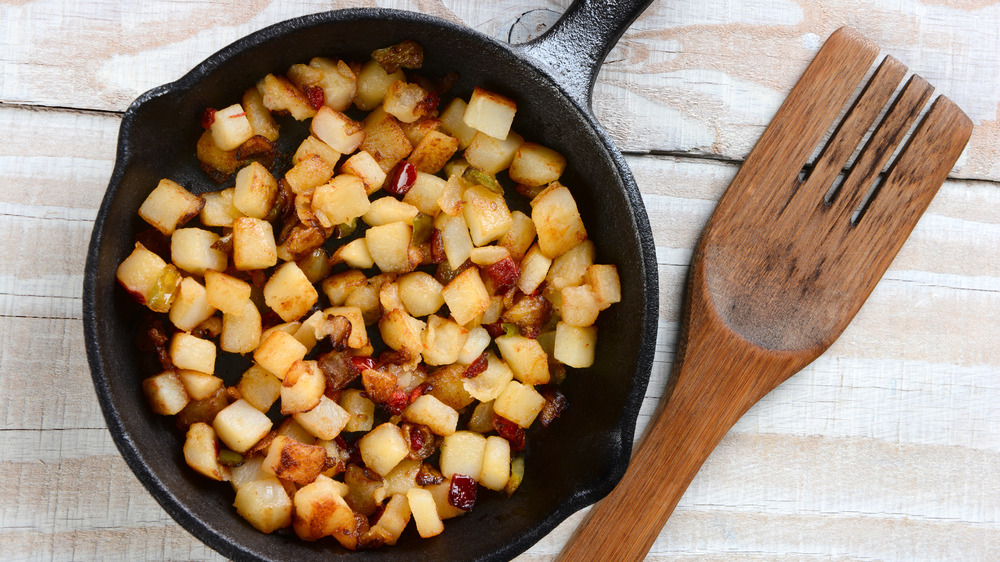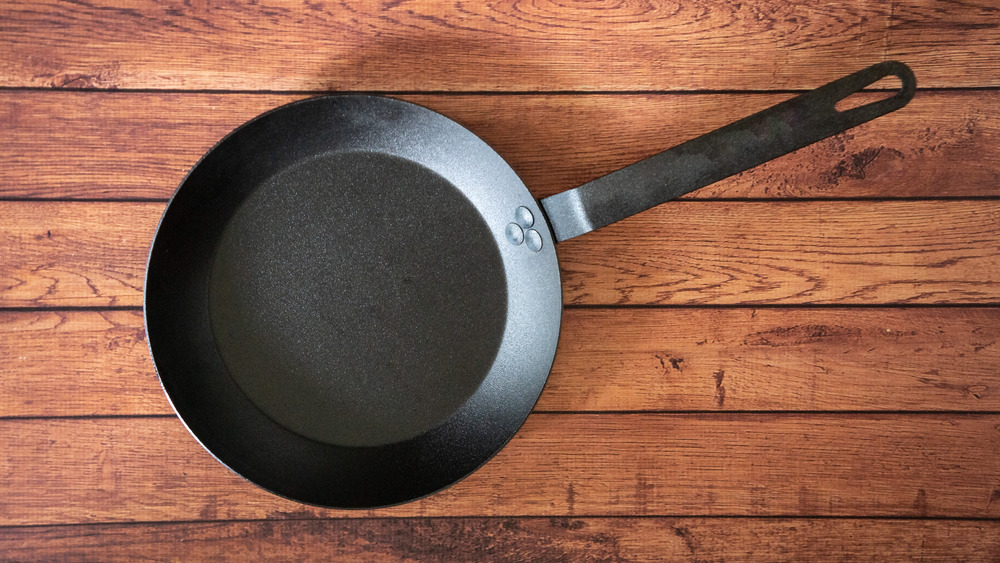Why Carbon Steel Skillets Are Replacing Cast Iron
Those who love their cast iron skillet really love their cast iron skillet. However, there's another kind of metal taking over kitchens everywhere — even professional kitchens, and it's carbon steel (via Wall Street Journal). Both are made from the same combination of metals and both have to be cared for in relatively similar ways. But there are some significant differences between the two that are not quite as obvious.
Carbon steel and cast iron are made from iron and carbon, but where they differ comes down to how much carbon is incorporated (via The Spruce Eats). For cast iron, an estimated 2 to 3.5% of the metal is made up of carbon. Carbon can break more easily, which is why cast iron dutch ovens, skillets, and more tend to be so thick, per The Spruce Eats. Carbon is also responsible for why it takes cast iron such a long time to heat up and cool down, as well as its amazing ability to retain heat. The Wall Street Journal even notes that a 12-inch cast iron skillet made by Lodge weighs in at around eight pounds.
Carbon steel must have no more and no less than two percent carbon to fall into this category. More, and it becomes cast iron, or less, and it becomes stainless steel, per The Spruce Eats. Carbon steel does not break as easily thanks to its lower percentage of carbon and it also heats up a lot faster than cast iron. You will, however, pay more for that advantage.
Here are the advantages of carbon steel
Another misconception about cast iron that's actually true for carbon steel is that it heats quite evenly rather than forming hot spots as it warms up on the eye or in the oven. Carbon steel can also achieve the temperatures needed to successfully complete some tasks for which cast iron is so well known, such as searing meat, per The Spruce Eats. It is also worth noting that the metal is much lighter. A 12.5-inch carbon steel pan made by Mauviel is just 5 pounds, which is significantly less than its 8-pound cast iron counterpart, per The Wall Street Journal.
In The Wall Street Journal, Chef Elizabeth Karmel explains why, in her professional opinion, she prefers the flashy metal that's trending up. She said, "The surface is smoother, slicker and gives an end-to-end crust perfectly in a shorter amount of time." François Brunet, a pastry chef, also chimed in to add that carbon steel is "especially good for caramelization." So, if you are willing to pay the higher price, carbon steel is the way to go for cooking well and quicker

